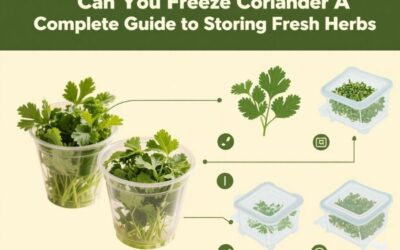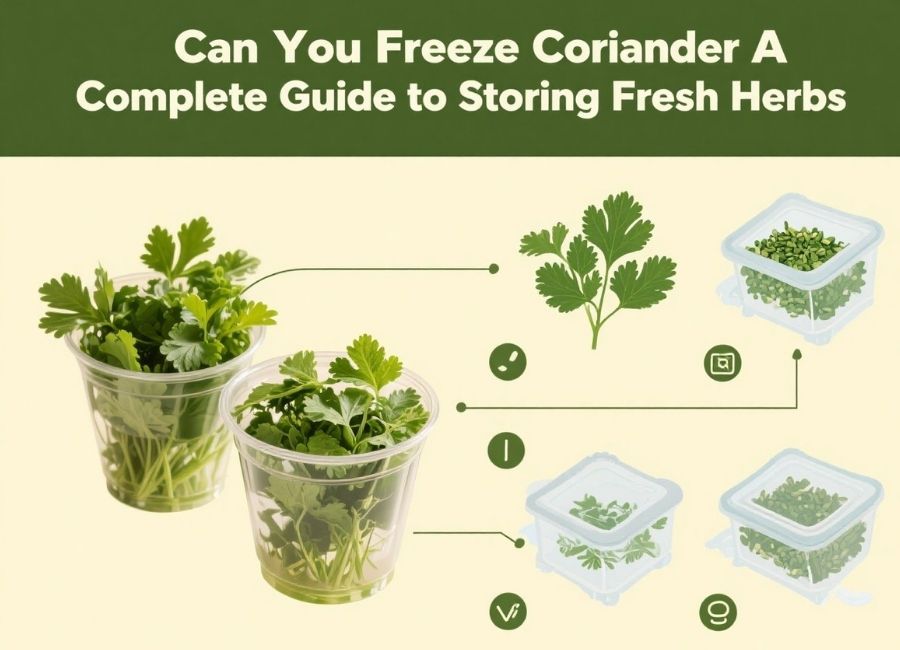Coriander has a way of transforming simple dishes into vibrant, flavorful meals. This aromatic herb, also known as cilantro in some parts of the world, is a kitchen staple for zesty salsas, curries, and tangy salads. However, coriander wilts quickly in the fridge and often ends up in the trash before you’ve had a chance to use it all. The question arises, “Can you freeze coriander to keep it fresh for longer?”
The answer is a resounding yes! Freezing coriander is a game-changer for reducing food waste while ensuring you always have a burst of freshness ready to go. This guide will take you through why freezing is an excellent option, how to do it properly, and tips for making the most of your frozen coriander.
Why Freeze Coriander
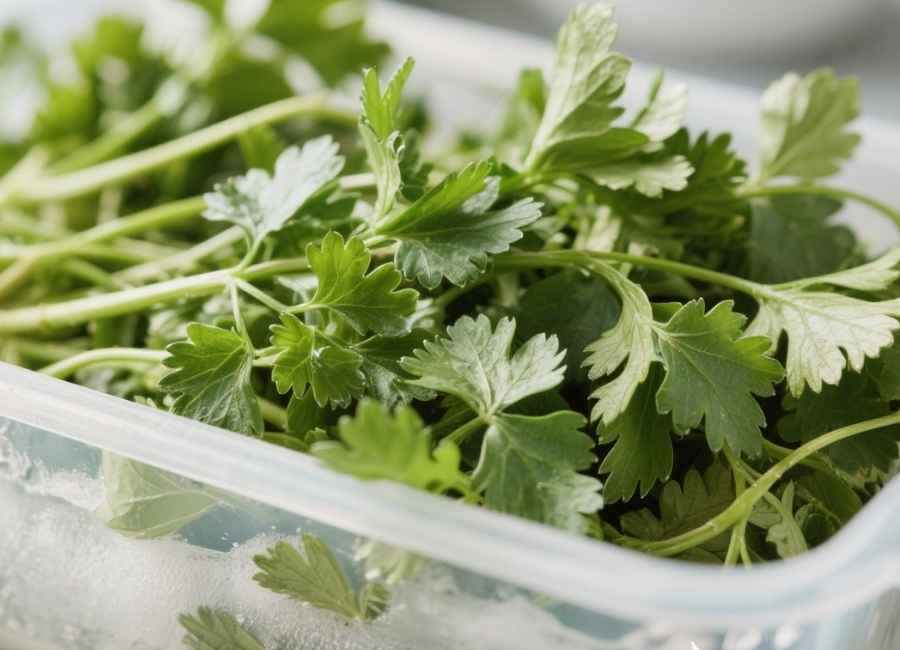
Coriander’s delicate green leaves make it notoriously perishable. Stored in the refrigerator, coriander can last only about 3–5 days before it begins to wilt or lose its flavor. Here are some reasons why freezing coriander is a smart idea for home cooks:
Prolongs Shelf Life
Freezing coriander allows you to extend its usability from mere days to months. Proper freezing maintains its flavor, so you can enjoy it without compromising the taste.
Reduces Waste
Ever bought a bunch of coriander, only to use a few sprigs before the rest spoils? Freezing lets you save the remaining batch, reducing food wastage.
Saves Time
Prepping coriander for the freezer means it’s washed, chopped, and ready to use whenever you need it, perfect for last-minute recipes.
Now that you understand the benefits, it’s time to look at how to freeze coriander correctly.
Step by Step Guide to Freezing Coriander
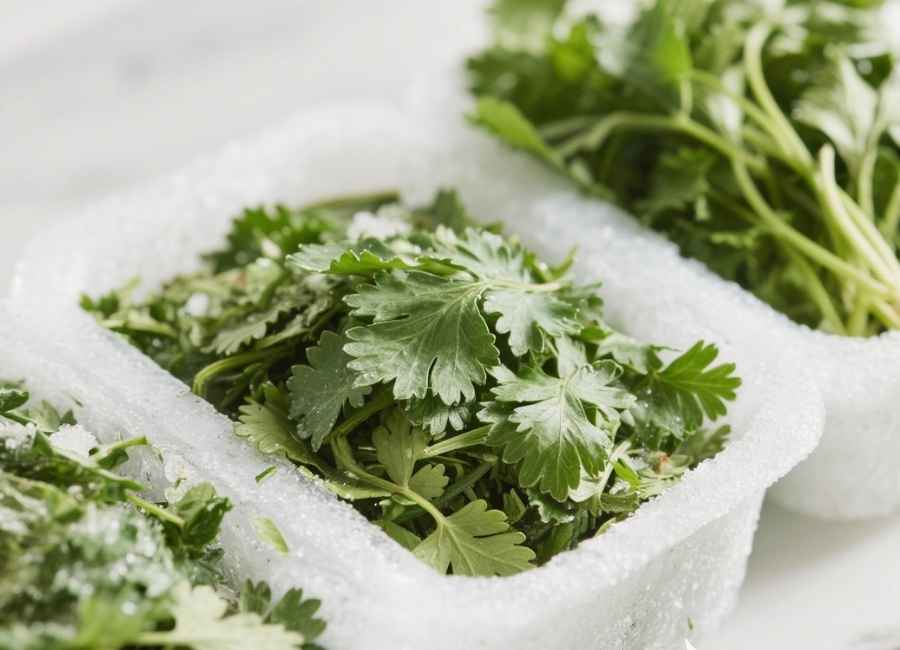
Freezing herbs might seem like a small task but doing it the right way determines how much flavor and texture remain intact. Here’s how you can freeze coriander effectively:
1. Wash and Dry Thoroughly
Before freezing coriander, wash it under cold running water to remove dirt, pesticides, or other impurities. Spread the leaves out on a clean kitchen towel or paper towel and pat them dry gently. Air-drying the leaves is crucial because excess moisture can cause freezer burn and degrade the quality.
2. Decide How You Want to Freeze It
Coriander can be frozen in multiple ways depending on how you plan to use it in the future. Choose the best option for your cooking needs:
Method 1 Chopped and Stored Loose
For quick and easy access to individual portions, chop the coriander and freeze it loosely.
- How to Do It:
- Chop the coriander leaves finely, including the tender stems if you prefer.
- Spread the chopped coriander onto a baking sheet lined with parchment paper.
- Place the tray in the freezer for 1–2 hours until the pieces are frozen solid.
- Transfer the frozen coriander into an airtight freezer bag or container.
- Best For: Sprinkling over soups, salads, and finished dishes as a garnish.
Method 2 Freeze Whole Leaves
If you want to preserve the herb’s natural shape for decoration or large-scale cooking, freeze it whole.
- How to Do It:
- After washing and drying, pick the leaves off the stems.
- Place the leaves in an airtight bag, ensuring to press out as much air as possible before sealing.
- Best For: Decorative garnishes or dishes where the presentation matters.
Method 3 Coriander Ice Cubes
Turn your coriander into convenient flavor boosters by freezing it with a bit of water or oil.
- How to Do It:
- Chop the coriander leaves and stems finely.
- Place small portions of chopped coriander into an ice cube tray.
- Cover each compartment with water or olive oil.
- Freeze overnight, then transfer the cubes into a freezer-safe bag.
- Best For: Melted directly into soups, stews, sauces, or curries.
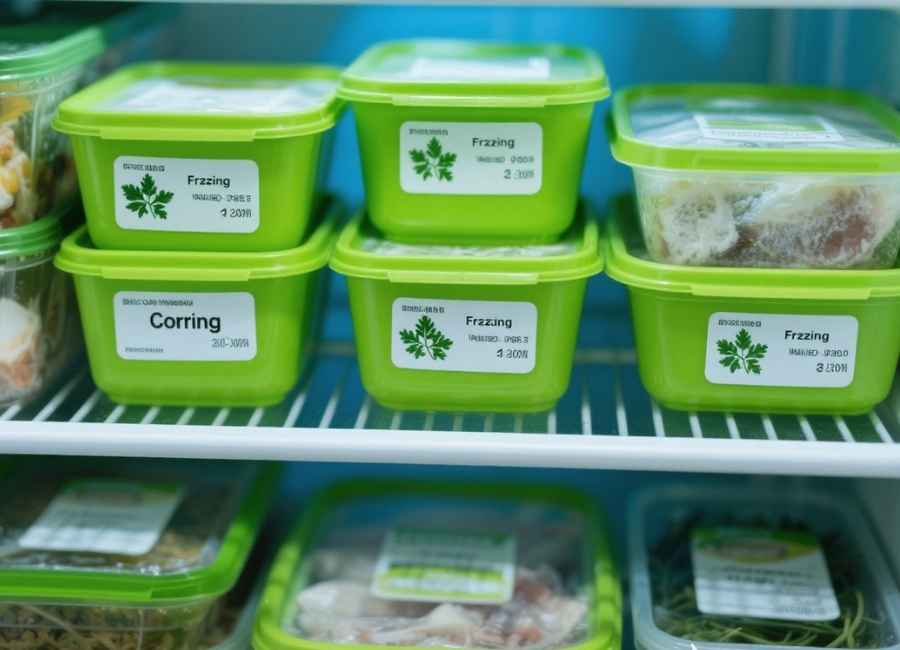
3. Label and Date Your Containers
Freezing can make it easy to forget what’s what. Always label your containers or bags with the date of freezing. Coriander can last up to 6 months in the freezer, but for the best flavor, use it within 3 months.
4. Store in the Coldest Part of the Freezer
To preserve coriander’s flavor and nutritional integrity, place the container in the coldest section of your freezer, typically the back or bottom.
Tips for Using Frozen Coriander
Frozen coriander is an incredible kitchen hack, but it works best when used appropriately. Here are some tips to make the most of your frozen stash:
Use It Where Texture Isn’t Essential
Frozen coriander softens upon thawing, so it’s ideal for dishes where texture isn’t a significant factor, like curries, soups, and marinades, rather than fresh salads or salsas.
Add Directly to Cooking
No need to thaw! Toss frozen coriander directly into your hot dishes, where it will melt and mingle with ingredients seamlessly.
Avoid Overcooking
Frozen coriander cooks faster than its fresh counterpart. Add it only toward the end of the cooking process to prevent the flavor from degrading.
Common Questions About Freezing Coriander
Does freezing coriander affect its flavor?
While freezing may slightly alter the texture, the flavor remains intact if properly stored. However, it’s always recommended to consume within 3 months for the freshest taste.
Can you freeze coriander stems?
Yes! Coriander stems are packed with flavor and can be frozen alongside the leaves. Chop them finely and use them in soups, stews, or sauces.
Can you refreeze coriander?
It’s best to avoid refreezing thawed coriander since it can develop a mushy texture and lose its vibrant flavor.
Transform the Way You Store Fresh Herbs
Freezing coriander is a great way to keep this versatile herb at your fingertips while minimizing waste. Whether you’re an enthusiastic home cook or a casual dabbler in the kitchen, mastering the art of freezing coriander ensures that you’ll never run out of its bold, fresh flavor.
Next time you find yourself with an abundance of coriander, skip the guilt and store it in your freezer instead. With the steps and tips shared in this guide, you’re all set to make the most of your herbs.










